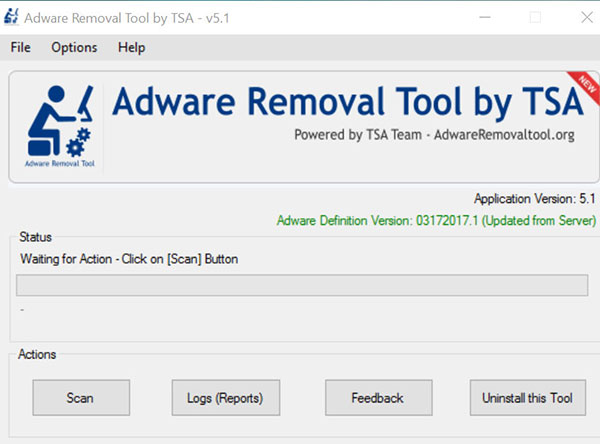

- #Adware cleaner google chrome install#
- #Adware cleaner google chrome software#
- #Adware cleaner google chrome download#
- #Adware cleaner google chrome free#
#Adware cleaner google chrome install#
When Malwarebytes has finished downloading, double-click on the MBSetup file to install Malwarebytes on your computer.
#Adware cleaner google chrome download#
(The above link will open a new page from where you can download Malwarebytes)ĭouble-click on the Malwarebytes setup file. You can download Malwarebytes by clicking the link below.
#Adware cleaner google chrome free#
When it comes to cleaning up an infected device, Malwarebytes has always been free and we recommend it as an essential tool in the fight against malware.
#Adware cleaner google chrome software#
It is able to destroy many types of malware that other software tends to miss, without costing you absolutely nothing. Malwarebytes is one of the most popular and most used anti-malware software for Windows, and for good reasons. In this second step, we will download, install and run a scan with Malwarebytes to remove browser hijackers, malicious extensions, adware, and other malware from Chrome. STEP 2: Use Malwarebytes to remove Chrome browser hijackers and adware Make sure to read all of the prompts carefully, because some malicious programs try to sneak things in hoping that you won’t read closely. In the next message box, confirm the uninstall process by clicking on Yes, then follow the prompts to uninstall malicious program. If you cannot find any malicious programs on your computer, you can continue with the second step from this guide.įollow the on-screen prompts to uninstall malcious program. Look out for any suspicious program that could be behind all the drama – anything you don’t remember downloading or that doesn’t sound like a genuine program.

The malicious program may have a different name on your computer.

This guide was written to help people remove malware from their Chrome browser, so if you’re just looking for a way to block redirects or pop-up ads on a specific site, then you can install an adblocker like AdGuard. If you are unsure how a Chrome extension was installed or are concerned unwanted programs may be installed on your computer or phone, you can use the removal guide below to remove them. In most cases, malicious Chrome browser extensions or programs are being distributed using malicious advertisements or are bundled with other free software that you download off of the Internet, leaving the user puzzled about where it came from. You are seeing pop-up ads and redirects in your Chrome browser because your computer is either infected with malware or another site is redirecting you to these pages. Why am I seeing pop-up ads and redirects in Chrome? Other unwanted programs might get installed without your knowledge.Browser popups appear which recommend fake updates or other software.Website links redirect to sites different from what you expected.Web pages that you typically visit are not displaying properly.Your web browser’s homepage has mysteriously changed without your permission.Your browser search engine is changed without your consent.Advertisements appear in places they shouldn’t be.Here are a few typical signs that your Chrome browser is infected with malware: If you see a new browser extension that you don’t remember installing, there’s a good chance there’s malware on your system. Malicious browser extensions are offered through advertisements and once installed can collect private data about your browsing habits, or change your browser settings.Also, you might experience new tabs opening, a change in your home page, findings from a search engine you never heard of, or even a redirect to an NSFW website. When a malicious program displays advertisements it will either display them in pop-up windows, directly on a web page you are visiting, or will appear as videos, banners, moving ads, or like folded down the page in the top right corner of the web site. These ads will overlay the content on the page and when you click on a link, it will just open a pop-up to another advertisement. The above images are examples of unwanted advertisements within the browser that are usually caused by adware installed on your computer. Adware is unwanted software designed to throw advertisements up on your screen, most often within a web browser.In most cases, the browser hijacker will change your browser search provider to generate advertising revenue by using Yahoo Search, Bing Search, or Google Search for its search results. Browser hijackers are not something new and malware developers have been using this technique for years to generate traffic to their sites, gather search terms, and redirect users to websites from where they’ll receive a commission or some sort of revenue.


 0 kommentar(er)
0 kommentar(er)
